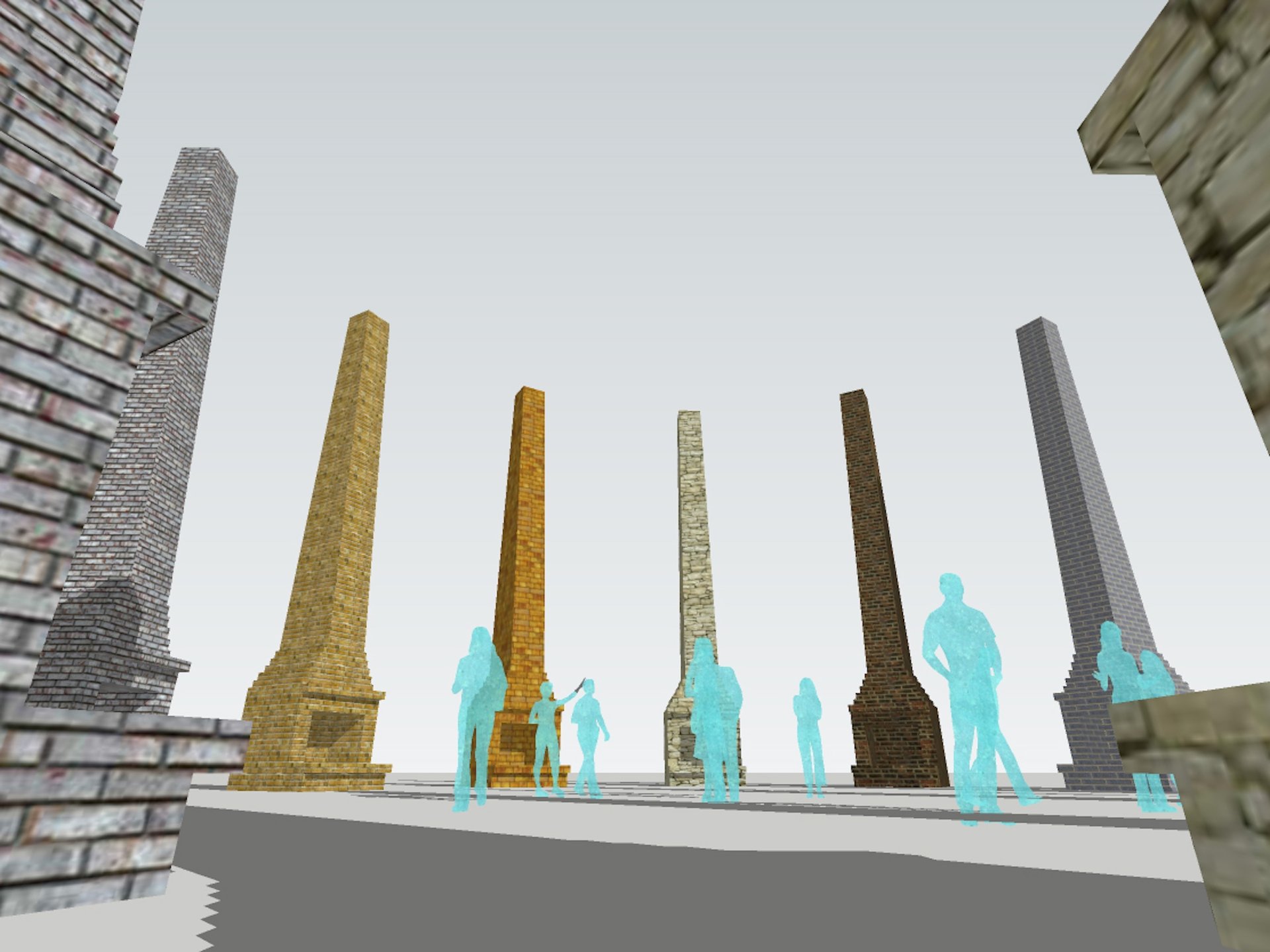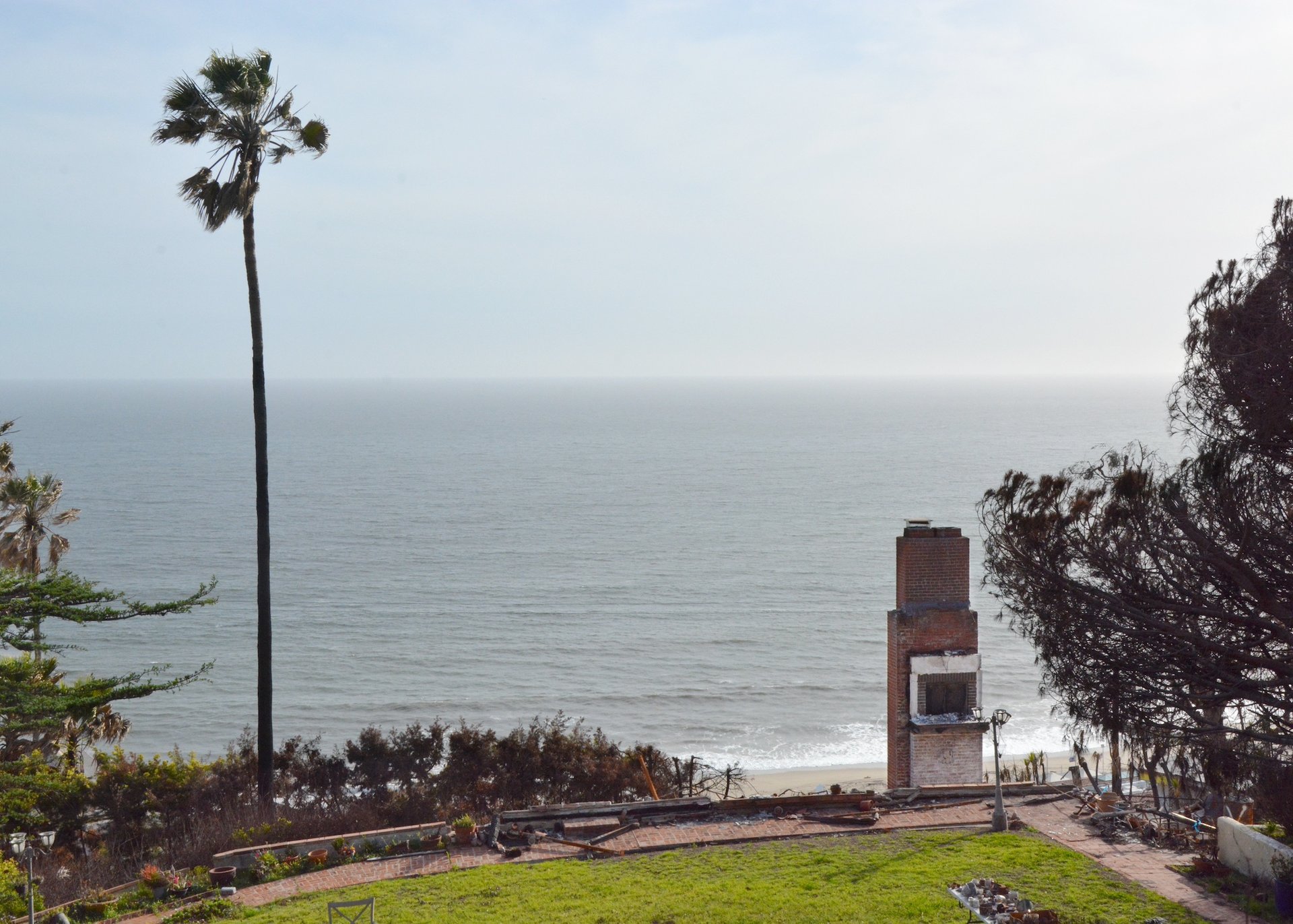Los Angeles wildfire memorial project seeks to save chimneys from famous architects’ houses – The Art Newspaper
For centuries, the hearth has represented the centre of our homes, the place where we tell stories, celebrate holidays and spend time with our families. In Los Angeles’s Pacific Palisades neighbourhood, the chimneys are all that remain among the ruins of many houses following the massive wildfires that ripped through the area in early January.
Now, one organisation is working with city officials and homeowners to preserve several of these architecturally significant chimneys, including examples designed by Eric Lloyd Wright (Frank’s grandson) and Richard Neutra.
The project is the brainchild of Evan Hall, the founder of House Museum—an “alternative preservation agency”—which has taken on the chimneys’ conservation as its latest endeavour. Hall hopes to create a memorial using the chimneys that eventually provides a gathering and reflection space for the community in the Santa Monica Mountains.
Richard Neutra, Kesler House, 1954 Schulman Photo Archive, Getty Research Institute
“It was really a no-brainer that we had to save some of those structures,” Hall says.
It is, however, easier said than done. So far, 55 remaining chimneys in the Palisades have been identified and seven of those are currently due to be saved. Hall says it is a “race against time” to figure out how to safely transport, store and preserve them. As the Army Corps of Engineers is clearing debris as fast as it can—about 40 homes per day—and homeowners are working with contractors and private clearance companies so they can rebuild, time is of the essence.
“We have had to directly engage with the homeowners to explain the project, to explain the vision, to explain or communicate the value of their structure and to also listen to what their challenges are… which has been probably one of the most beautiful parts of this process,” Hall says. “It’s just really listening and getting access to first-hand accounts of what’s going on.”
One of those homeowners is Roger Soffer. Soffer grew up in the Palisades, in a house designed by Frank Lloyd Wright’s grandson, Eric Lloyd Wright.
“We moved there when I was six years old,” says Soffer, who is now in his sixties. His mother, the historian Reba Soffer, lived in the house until the Palisades Fire destroyed it. Soffer describes the room that featured the chimney—now all that is left of the historic house—which included a Japanese garden, a circular staircase and custom built-in furniture.
“The [fireplace] in the study—that’s where my mum wrote books, where she worked. It was the heart of her intellectual world. Eric [Lloyd Wright] put in a giant windowpane, bigger than a door-size windowpane, that looked into the enclosed Japanese garden,” Soffer says. “The whole room was walnut, all the desks and shelves and cabinetry built in, and this brick fireplace in the centre of one of the walls that lent to its warmth.”

Palisades Fire Memorial, concept rendering © Milton Lau, AIA, Evan Hall, House Museum
The architect Jack Hillbrand of the firm Studio 1323 is working with the House Museum on logistics. “It’s clearly a project of meticulous planning and technical expertise with strict adherence to safety protocols,” he says, referring to both the permitting process to eventually create the memorial as well as ongoing concerns about asbestos, clearance and timing to save the chimneys. But he feels it is worth pursuing.
“There is a unique value to it, culturally, it’s a multifaceted reflection of architectural importance and its role as a symbol of the community’s memory,” Hillbrand says. “It’s a tangible connection to the past…and the association there is particularly poignant in areas where original structures have been lost, and these are remnants that allow for a sense of continuity, maybe in a reflection of the lives that once lived there.”

View from Las Casas, Pacific Palisades, 28 March 2025 © Evan Curtis Charles Hall, House Museum
The House Museum is working with the mayor’s office, local and state officials to secure a permanent space for the memorial, which Hall says will take at least another year to create.
Hall added that while he envisions the physical memorial to live in the same conversation as Chris Burden’s Urban Light (2008) at the Los Angeles County Museum of Art and the National September 11 Memorial in New York, there is a digital component to the project as well. A team has been capturing the chimneys using 3D-scanning technology and meticulously documenting the sites with photographs. They are also recording oral histories of the spaces through interviews with homeowners to create a complete picture as they pursue a physical space for the salvaged chimneys.
Soffer says the concept is one that Lloyd Wright would have loved. “Anytime anybody can take art and combine it with culture and history to make a memorial that will sit in nature—which certainly for Eric would have been well loved—it’s a great idea.”




